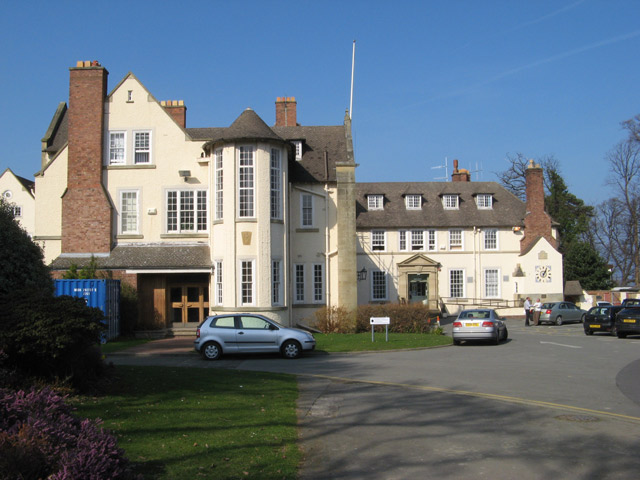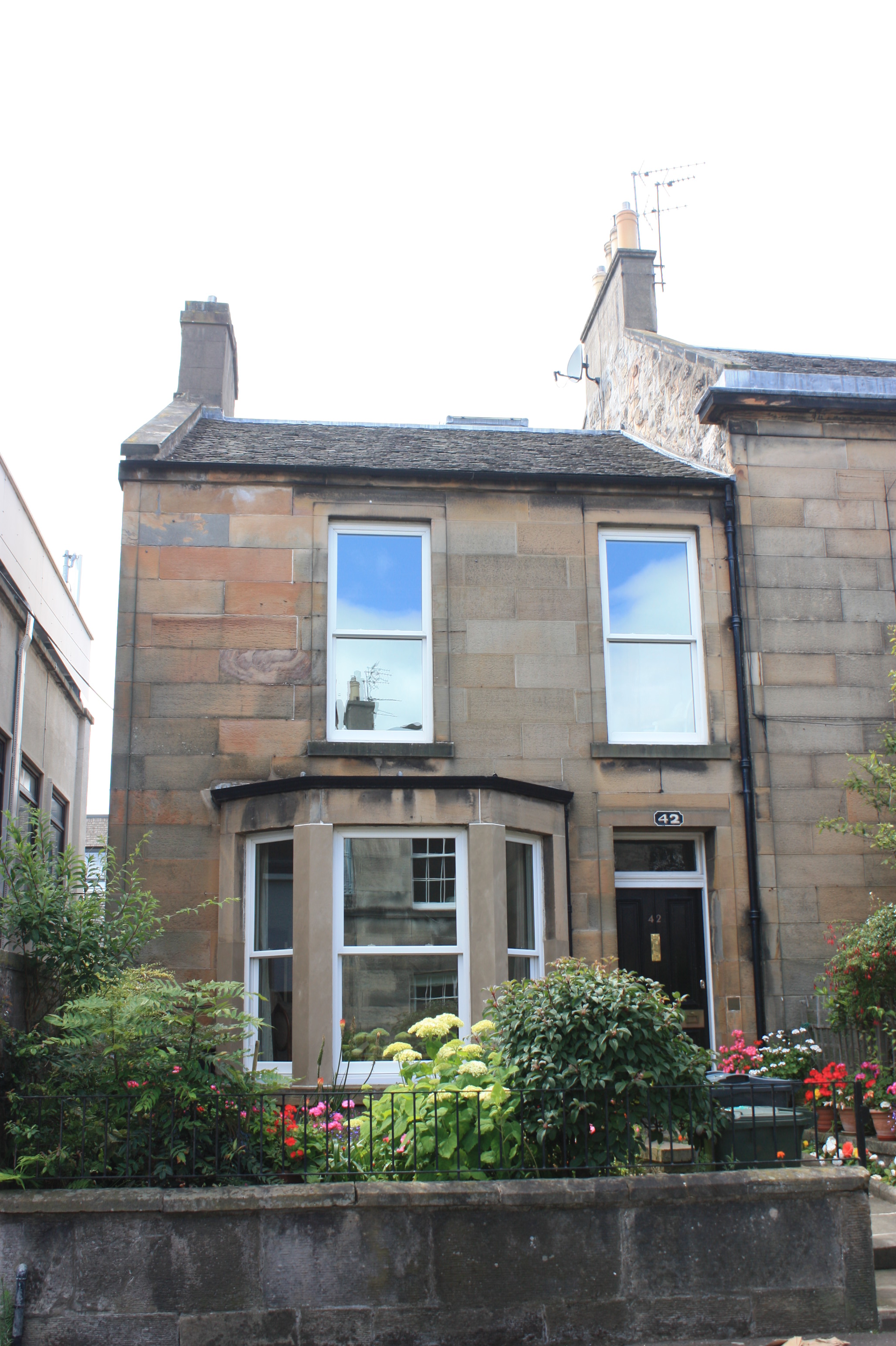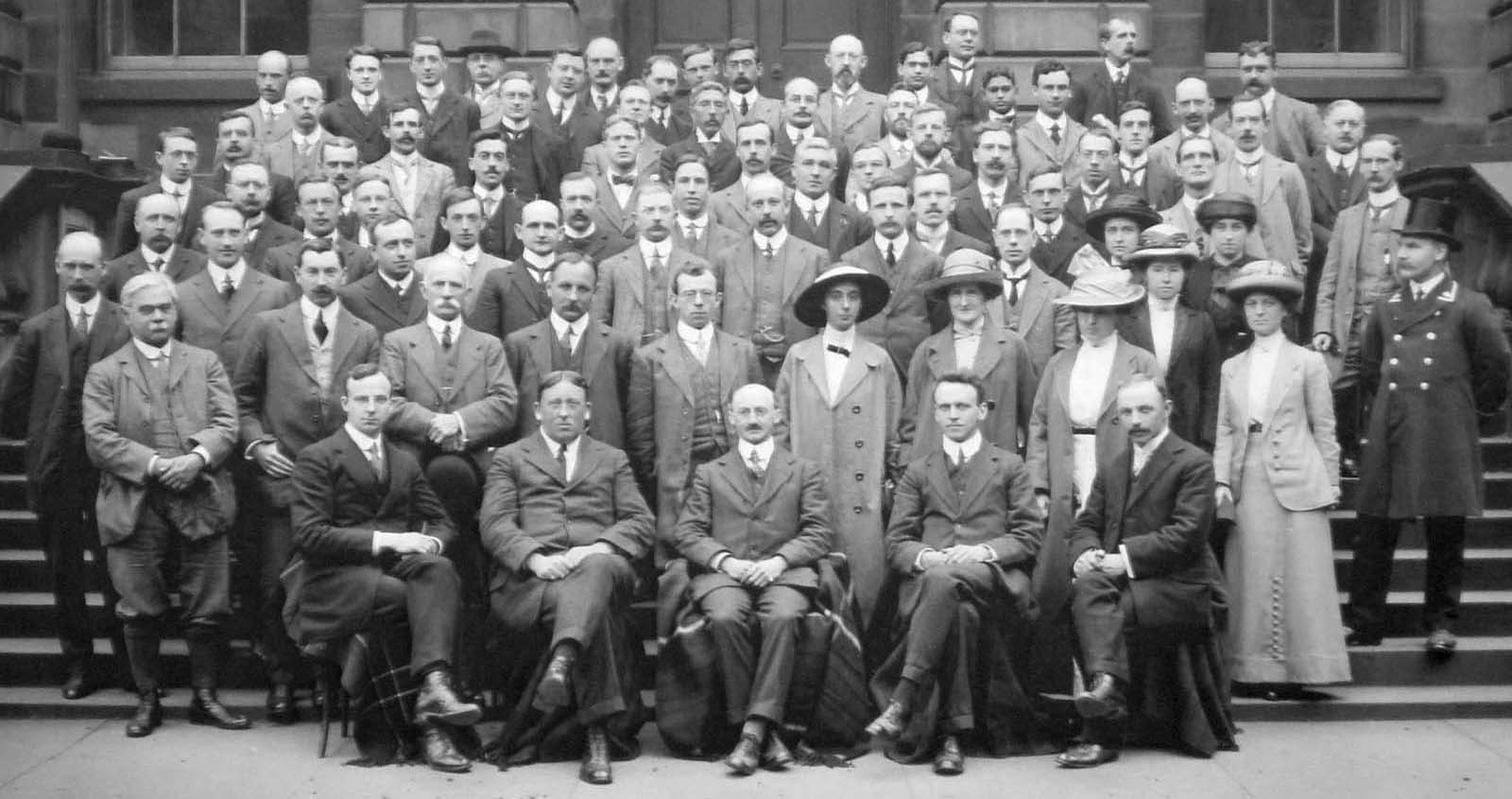|
B. D. Porritt
Benjamin Dawson Porritt FRSE FIC FIP FIRI (26 January 1884 – 28 January 1940) was an early 20th century British chemist and academic author, specialising in the use of rubber. In authorship he is known as B. D. Porritt. He was a keen yachtsman and rugby player. Life He was born on 26 January 1884 at Turtle Mountain in Canada. He was the son of Herbert Thomas Porritt, from Armley, Yorkshire in Britain. His family returned to Britain soon after his birth and he was educated at Whitgift Grammar School in Croydon in London. In 1903 he entered University College, London studying Chemistry. He graduated BSc in 1906. He then proceeded to gain an MSc and began research with Sir William Ramsay and Sir Norman Collie. Around 1909 he moved to Edinburgh as a chemist to the North British Rubber Company who had huge works in the Fountainbridge district (mainly making wellington boots and rubber hot water bottles). He was promoted to Senior Chemist in 1912. In 1916 he became Research ... [...More Info...] [...Related Items...] OR: [Wikipedia] [Google] [Baidu] |
FRSE
Fellowship of the Royal Society of Edinburgh (FRSE) is an award granted to individuals that the Royal Society of Edinburgh, Scotland's national academy of science and letters, judged to be "eminently distinguished in their subject". This society received a royal charter in 1783, allowing for its expansion. Elections Around 50 new fellows are elected each year in March. there are around 1,650 Fellows, including 71 Honorary Fellows and 76 Corresponding Fellows. Fellows are entitled to use the post-nominal letters FRSE, Honorary Fellows HonFRSE, and Corresponding Fellows CorrFRSE. Disciplines The Fellowship is split into four broad sectors, covering the full range of physical and life sciences, arts, humanities, social sciences, education, professions, industry, business and public life. A: Life Sciences * A1: Biomedical and Cognitive Sciences * A2: Clinical Sciences * A3: Organismal and Environmental Biology * A4: Cell and Molecular Biology B: Physical, Engineering and ... [...More Info...] [...Related Items...] OR: [Wikipedia] [Google] [Baidu] |
Hot Water Bottle
A hot-water bottle is a bottle filled with hot water and sealed with a stopper, used to provide warmth, typically while in bed, but also for the application of heat to a specific part of the body. Early history Containers for warmth in bed were in use as early as the 16th century. The earliest versions contained hot coals from the dying embers of the fire, and these bed warmers were used to warm the bed before getting into it. Containers using hot water were soon also used, with the advantages that they could remain in the bed with the sleeper and were not so hot as to be a fire risk. Prior to the invention of rubber that could withstand sufficient heat, these early hot-water bottles were made of a variety of materials, such as zinc, copper, brass, glass, earthenware or wood. To prevent burning, the metal hot water flasks were wrapped in a soft cloth bag. Rubber bottles "India rubber" hot-water bottles were in use in Britain at least by 1875. Modern conventional hot-water ... [...More Info...] [...Related Items...] OR: [Wikipedia] [Google] [Baidu] |
Rubber
Rubber, also called India rubber, latex, Amazonian rubber, ''caucho'', or ''caoutchouc'', as initially produced, consists of polymers of the organic compound isoprene, with minor impurities of other organic compounds. Thailand, Malaysia, and Indonesia are three of the leading rubber producers. Types of polyisoprene that are used as natural rubbers are classified as elastomers. Currently, rubber is harvested mainly in the form of the latex from the rubber tree (''Hevea brasiliensis'') or others. The latex is a sticky, milky and white colloid drawn off by making incisions in the bark and collecting the fluid in vessels in a process called "tapping". The latex then is refined into the rubber that is ready for commercial processing. In major areas, latex is allowed to coagulate in the collection cup. The coagulated lumps are collected and processed into dry forms for sale. Natural rubber is used extensively in many applications and products, either alone or in combination wit ... [...More Info...] [...Related Items...] OR: [Wikipedia] [Google] [Baidu] |
British Chemists
British may refer to: Peoples, culture, and language * British people, nationals or natives of the United Kingdom, British Overseas Territories, and Crown Dependencies. ** Britishness, the British identity and common culture * British English, the English language as spoken and written in the United Kingdom or, more broadly, throughout the British Isles * Celtic Britons, an ancient ethno-linguistic group * Brittonic languages, a branch of the Insular Celtic language family (formerly called British) ** Common Brittonic, an ancient language Other uses *''Brit(ish)'', a 2018 memoir by Afua Hirsch *People or things associated with: ** Great Britain, an island ** United Kingdom, a sovereign state ** Kingdom of Great Britain (1707–1800) ** United Kingdom of Great Britain and Ireland (1801–1922) See also * Terminology of the British Isles * Alternative names for the British * English (other) * Britannic (other) * British Isles * Brit (other) * Briton (d ... [...More Info...] [...Related Items...] OR: [Wikipedia] [Google] [Baidu] |
1940 Deaths
Year 194 ( CXCIV) was a common year starting on Tuesday (link will display the full calendar) of the Julian calendar. At the time, it was known as the Year of the Consulship of Septimius and Septimius (or, less frequently, year 947 ''Ab urbe condita''). The denomination 194 for this year has been used since the early medieval period, when the Anno Domini calendar era became the prevalent method in Europe for naming years. Events By place Roman Empire * Emperor Septimius Severus and Decimus Clodius Septimius Albinus Caesar become Roman Consuls. * Battle of Issus: Septimius Severus marches with his army (12 legions) to Cilicia, and defeats Pescennius Niger, Roman governor of Syria. Pescennius retreats to Antioch, and is executed by Severus' troops. * Septimius Severus besieges Byzantium (194–196); the city walls suffer extensive damage. Asia * Battle of Yan Province: Warlords Cao Cao and Lü Bu fight for control over Yan Province; the battle lasts for over 100 ... [...More Info...] [...Related Items...] OR: [Wikipedia] [Google] [Baidu] |
1884 Births
Events January–March * January 4 – The Fabian Society is founded in London. * January 5 – Gilbert and Sullivan's ''Princess Ida'' premières at the Savoy Theatre, London. * January 18 – Dr. William Price attempts to cremate his dead baby son, Iesu Grist, in Wales. Later tried and acquitted on the grounds that cremation is not contrary to English law, he is thus able to carry out the ceremony (the first in the United Kingdom in modern times) on March 14, setting a legal precedent. * February 1 – ''A New English Dictionary on historical principles, part 1'' (edited by James A. H. Murray), the first fascicle of what will become ''The Oxford English Dictionary'', is published in England. * February 5 – Derby County Football Club is founded in England. * March 13 – The siege of Khartoum, Sudan, begins (ends on January 26, 1885). * March 28 – Prince Leopold, the youngest son and the eighth child of Queen Victoria and Pr ... [...More Info...] [...Related Items...] OR: [Wikipedia] [Google] [Baidu] |
Bolata
Bolata ( bg, Болата) is a small cove and Nature reserve located in the Northern Bulgarian Black Sea Coast. Bolata is a locality located in the bay of the same name and is part of the Kaliakra Reserve. It is located in the northern part of the Bulgarian Black Sea coast near the village of Bulgarevo and near a former military station. The area is a wetland of great importance for few rare plant and animal species. The sandy beach is of natural origin and is unique for scandalous shores in the Kaliakra area. A small river has created a narrow gorge and flows into the swamp "Bolata" (Lake Bolata) with an area of 23 ha, covered with a vast mass of reeds. The limestone rocks in the area should be red in color, creating iron oxides in the clay that fill their cracks. The bay is part of the Natura 2000 Kaliakra Complex protected area. Bolata Cove Bolata cove is located at the northern rocky coastline of the Bulgarian seaside. It is 3 km to the north of the Kaliakra headland. ... [...More Info...] [...Related Items...] OR: [Wikipedia] [Google] [Baidu] |
Colwyn Medal
Colwyn was a local government district with borough status from 1974 to 1996, being one of six districts in the county of Clwyd, north-east Wales. History The borough was created on 1 April 1974, under the Local Government Act 1972. It covered parts of four former districts from the administrative county of Denbighshire, which were all abolished at the same time:* *Abergele Urban District *Aled Rural District, except the parish of Llansantffraid Glan Conway, which went to Aberconwy *Colwyn Bay Municipal Borough *Hiraethog Rural District, except the parishes of Eglwysbach, Llanddoget, Llanrwst Rural, and Tir Ifan, which went to Aberconwy The new borough was named Colwyn, taken from the name of the area's largest town, Colwyn Bay. Under the Local Government (Wales) Act 1994, Clwyd County Council and the county's constituent districts were abolished, being replaced by principal areas, whose councils perform the functions which had previously been divided between the county and ... [...More Info...] [...Related Items...] OR: [Wikipedia] [Google] [Baidu] |
Cargill Gilston Knott
Cargill Gilston Knott FRS, FRSE LLD (30 June 1856 – 26 October 1922) was a Scottish physicist and mathematician who was a pioneer in seismological research. He spent his early career in Japan. He later became a Fellow of the Royal Society, Secretary of the Royal Society of Edinburgh, and President of the Scottish Meteorological Society. Biography Knott was born in Penicuik, Midlothian, the son of Pelham Knott, an agent for a paper manufacturer and his wife Ellen. His paternal uncle was the artist Tavernor Knott. He was educated at Arbroath High School in Angus, and attended the University of Edinburgh, where he studied alongside James Alfred Ewing. He worked on various aspects of electricity and magnetism, obtaining his doctorate in 1879. He was appointed as an assistant in Natural Philosophy at the University of Edinburgh in 1879, and held this post until 1883, when he left to take up a post at Tokyo Imperial University. He was elected as a Fellow of the Royal Society of ... [...More Info...] [...Related Items...] OR: [Wikipedia] [Google] [Baidu] |
Edmund Taylor Whittaker
Sir Edmund Taylor Whittaker (24 October 1873 – 24 March 1956) was a British mathematician, physicist, and historian of science. Whittaker was a leading mathematical scholar of the early 20th-century who contributed widely to applied mathematics and was renowned for his research in mathematical physics and numerical analysis, including the theory of special functions, along with his contributions to astronomy, celestial mechanics, the history of physics, and digital signal processing. Among the most influential publications in Whittaker’s bibliography, he authored several popular reference works in mathematics, physics, and the history of science, including ''A Course of Modern Analysis'' (better known as ''Whittaker and Watson''), ''Analytical Dynamics of Particles and Rigid Bodies'', and ''A History of the Theories of Aether and Electricity''. Whittaker is also remembered for his role in the relativity priority dispute, as he credited Henri Poincaré and Hendrik Lorentz ... [...More Info...] [...Related Items...] OR: [Wikipedia] [Google] [Baidu] |
Alexander Lauder (chemist)
Alexander Lauder FRSE FIC (1870–1943) was a Scottish agricultural chemist. Life He was born in Greenock in 1870. He studied at the Andersonian college, Andersonian College in Glasgow under William Dittmar, Professor William Dittmar then at the University of Edinburgh. He began as an assistant lecturer at University College Bangor in Wales. He then returned to the University of Edinburgh to lecture in Agricultural Chemistry, also lecturing at the East of Scotland College of Agriculture. During this period he lived at 13 George Square in Edinburgh. In 1905 Lauder obtained a DSc from the University of Edinburgh. In 1910 he was elected a Fellow of the Royal Society of Edinburgh. His proposers were James Johnston Dobbie, Sir James Johnston Dobbie, Alexander Crum Brown, James Walker (chemist), Sir James Walker and Arthur Pillans Laurie. He served as the Society’s Secretary 1923 to 1928. He died in Greenock on 11 November 1943.Journal of the Chemical Society: December 1943 Publica ... [...More Info...] [...Related Items...] OR: [Wikipedia] [Google] [Baidu] |
James Walker (chemist)
Sir James Walker FRS FRSE FCS LLD (6 April 1863 – 6 May 1935) was a Scottish chemist. Life He was born at Logie House, in north-west Dundee the son of James Walker of J & H Walker, jute and flax spinners and weavers, and owners of the Dura Works. His mother was Susan Hutchison Cairns. He was educated at the High School of Dundee, and, although he had passed the entrance examination for the University of St Andrews, he instead joined his father's company. He stayed there for three years, then entered the University of Edinburgh to study sciences in 1882. He graduated with a BSc in 1885 and gained a doctorate in 1886. He then spent three years in Germany, working with Ludwig Claisen, Adolf von Baeyer and Wilhelm Ostwald. Following a PhD at the University of Leipzig in 1889, he returned to Britain, working in Edinburgh and University College, London, before being appointed professor of chemistry at the University College, Dundee in 1894. In 1890 he was elected a Fell ... [...More Info...] [...Related Items...] OR: [Wikipedia] [Google] [Baidu] |
.jpg)




